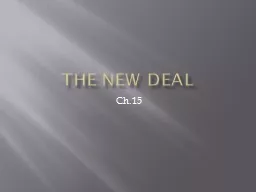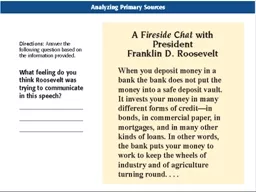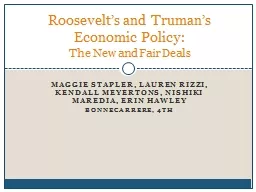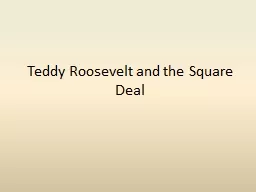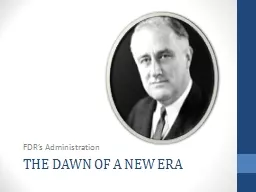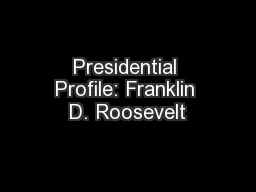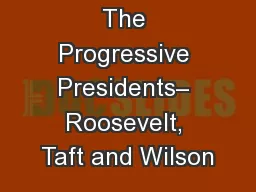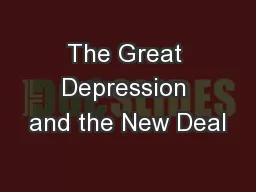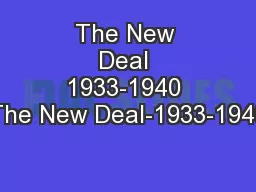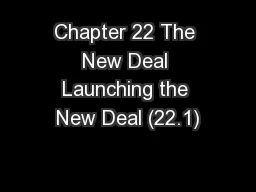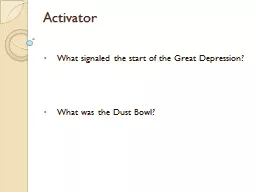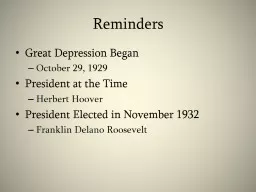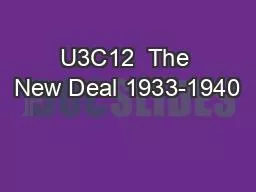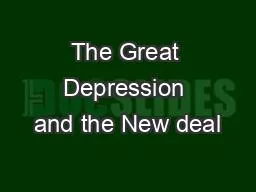PPT-The New Deal Ch.15 Roosevelt’s New Deal
Author : robaut | Published Date : 2020-07-01
Four months elapsed between the election and FDR taking office Worked with his advisors the Brain Trust on new policies that came to collectively be called the New
Presentation Embed Code
Download Presentation
Download Presentation The PPT/PDF document "The New Deal Ch.15 Roosevelt’s New Dea..." is the property of its rightful owner. Permission is granted to download and print the materials on this website for personal, non-commercial use only, and to display it on your personal computer provided you do not modify the materials and that you retain all copyright notices contained in the materials. By downloading content from our website, you accept the terms of this agreement.
The New Deal Ch.15 Roosevelt’s New Deal: Transcript
Download Rules Of Document
"The New Deal Ch.15 Roosevelt’s New Deal"The content belongs to its owner. You may download and print it for personal use, without modification, and keep all copyright notices. By downloading, you agree to these terms.
Related Documents

